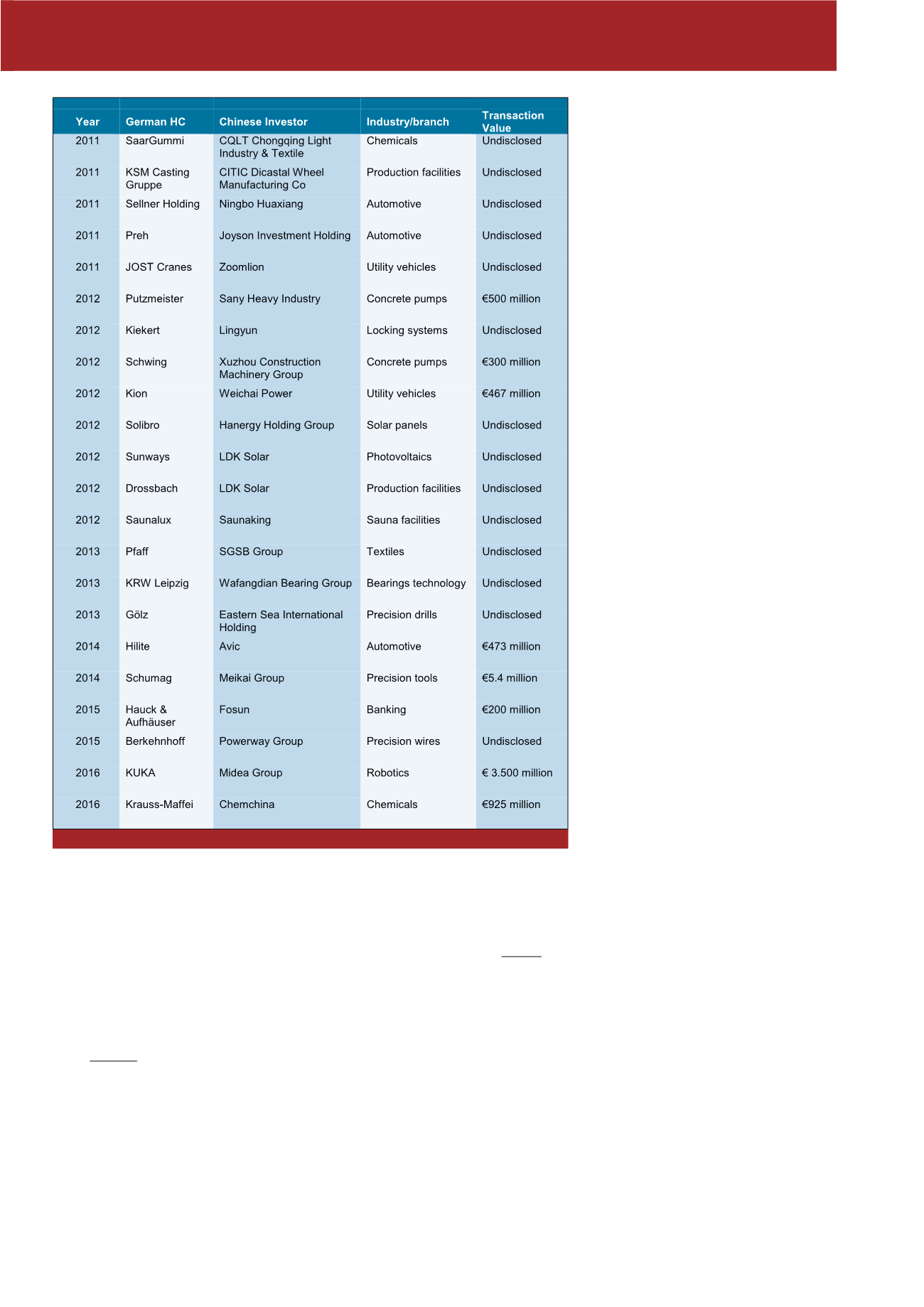
69
omnipresence in worldwide highly technologi-
cal markets such as machine building, chemi-
cals, solar energy, automotive supplies and IT
products, as well as their tendency to meet the
characteristics Chinese investors seek in Ger-
man companies: high technical standards, sta-
bility, quality of work, high market shares and a
strong position in Europe and abroad.
54
These
factors indicate that German companies, most
notably Hidden Champions, will continue to be
attractive to Chinese investors for years to
come.
Conclusion
In conclusion, Mergers & Acquisitions can be
considered a complicated and risky business
operation, especially when effectuated bet-
ween companies from two different cultures,
such as those of China and Germany. Howe-
ver, German companies stand to benefit from
Chinese investors’ large volume of investment
capital, strong sales network and local market
access in China. German companies may for
example move non-core production lines to
China to reduce unnecessary costs and con-
centrate more resources towards strengthe-
ning their competences in R&D and technolo-
gical development.
In parallel, with the acquisition of high- valued
European assets through M&As, Chinese com-
panies could speed up their transformation pro-
cess and make up for their weakness in global
brand recognition and core R&D capabilities
55
,
which would otherwise take decades to build
up in a traditional market environment. With the
rapid development of Chinese stock and capital
markets, many Chinese listed and pre-listed
companies are now also showcasing their suc-
cessful acquisitions of European upper-chain
assets in order to improve their chances of a
successful IPO or to quickly increase their mar-
ket capitalization
56
.
With the soaring of their trading price and mar-
ket capitalization, these companies would also
have a stronger ability to raise affordable capi-
tal on the stock market and thus further expand
their business network in the whole global in-
dustry. So there do exist a virtuous cycle and
both acquirer and acquiree could strike for a
not surprising that a large number of invest-
ments of Chinese firms in the past years have
involved German Hidden Champions, more so
than any other type of company. Table 3 pre-
sents an overview of some of the most recent
publicly-known deals between Chinese inves-
tors and German Hidden Champions.
According to a recent survey by Ernst & Young,
a total of 36 German SMEs were the target of
Chinese investments or purchases in 2015
(also 36 in 2014), maintaining Germany’s posi-
tion of the main target of Chinese investments
in Europe.
53
Unsurprisingly, a large number of
these investments involve German Hidden
Champions. This can be attributed to both their
however, but primarily by the companies’ wish
to be closer to their customers, unlike large
companies which tend to move abroad in low-
wage or low-production cost areas. Even
though the companies operate primarily in Eu-
ropean and North American countries, the
Asian markets are very close, on second
place, in terms of interest and level of invest-
ment. Figure 7 presents an overview of the
main reasons for the Coburg companies’ inte-
rest in internationalizing
51
.
Taking into account the nature of the Hidden
Champions, the sectors in which they operate
and the high standards to which they adhere in
order to remain worldwide market leaders, it is
Table 3: Examples of investments or acquisitions of German HCs by Chinese firms in recent years
52
CM September / Oktober 2018


